You know what a loser is? A real loser is somebody that’s so afraid of not winning, they don’t even try.
—Little Miss Sunshine
I recently tried something new and a little big magical.
It wasn’t quite perfect, but it wasn’t half-bad, either.
I learned a lot and I know now that I’m going to try it again—maybe even until I get those near-perfect results.
Maybe not. Depends on my patience.
Either way, it was supercool and blew my mind.
As some of you might be aware of, this past spring, a nasty outbreak of avian influenza has decimated populations of chickens and poultry, particularly hens kept in unsanitary and inhumane factory farms.
(Just being frank, friends.)
Michigan recently cancelled its poultry fair, as the first cases of bird flu spread to their state.
There’s no vaccine—so sick and healthy birds alike must be killed to try to stop the flu. Some 40 million of them, in fact.
This boils down to eggs being in shorter supply and the US agricultural economy taking a huge blow.
Think this is enough to get us all to stop and think about our farming practices and how animals and animal products are raised and made?
And how can we responsibly move forward as consumers and customers?
You all know my favorite desserts contain meringue (read: pavlova, daquoise, macaron, IMBC…).
And we all know that meringue can’t be made without eggs, right?
WRONG!
Sorry for shouting. BUT YOU GUYS some genius food scientist figured out how to make vegan meringue out of aqua faba, or bean water. Yes, the stuff that you drain off the top of a freshly opened can of beans.
Egg whites, in reality, are just water with suspended proteins; when they are whipped, the proteins form a net and the water is suspended, creating a foam (meringue!).
Using another type of protein solution, as it turns out, can work nearly as well.
So these eton messes are vegan.
And the meringue is made of chickpeas.
And I saved a couple eggs in the process.
It’s so, so simple.
Just use the drained water from a can of beans, and whip the living daylights out of it until it forms a foamy, fluffy meringue.
Stabilize with a little powdered sugar and starch, and you’ve got fluffy, pipeable meringue.
This was my first attempt, and my lovely fluffy meringues got all deflated in the oven, so that although they were crispy and light, they weren’t as tall as I wanted.
I’m going to try again, with different methods of stabilization and perhaps different beans.
The rest of the vegan eton mess was a bit of cold and creamy coconut whip, some sweet sliced bananas and crunchy toasted coconut, and a few golden star sprinkles for an extra magical touch!
Since my first vegan meringue didn’t come out quite perfectly for me, I’m still working on my own adaptations to the recipe I used so that the meringues stay super fluffy and tall, even after baking. They were delicious as is, though, so I want to direct you to the original recipe should you want to try.
Check it out here, at Wallflower Girl!
For coconut whip, check out Minimalist Baker (duh).

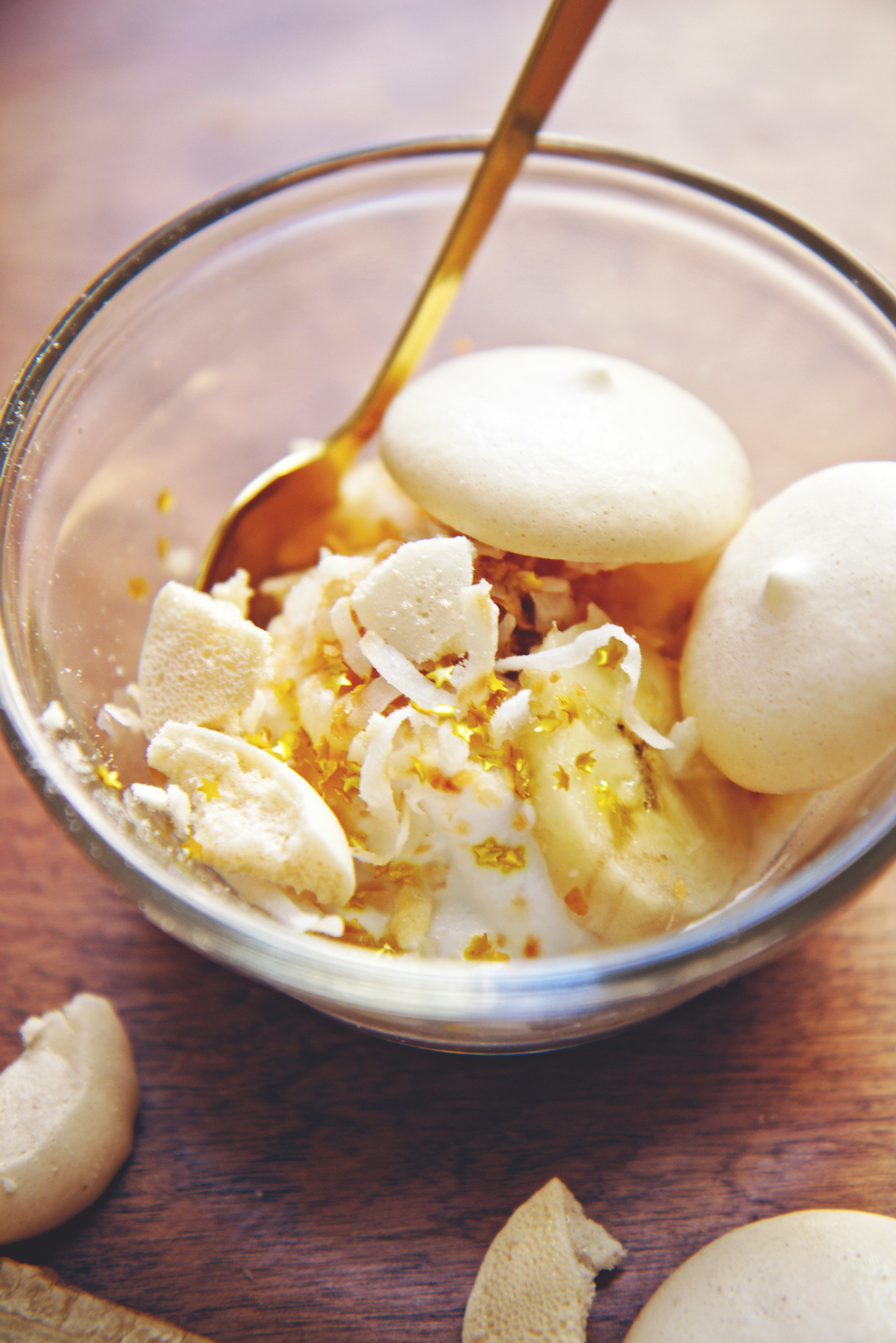
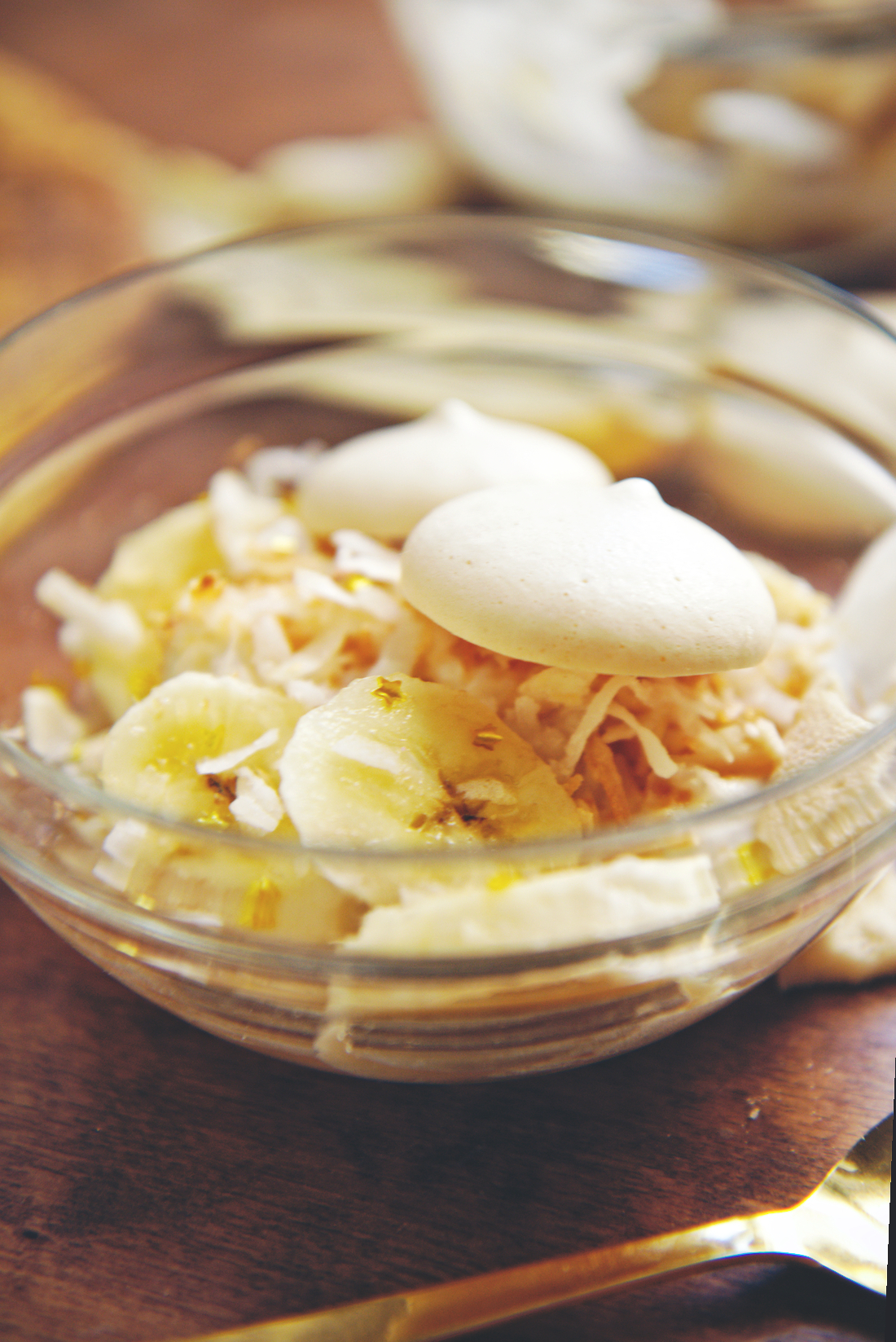
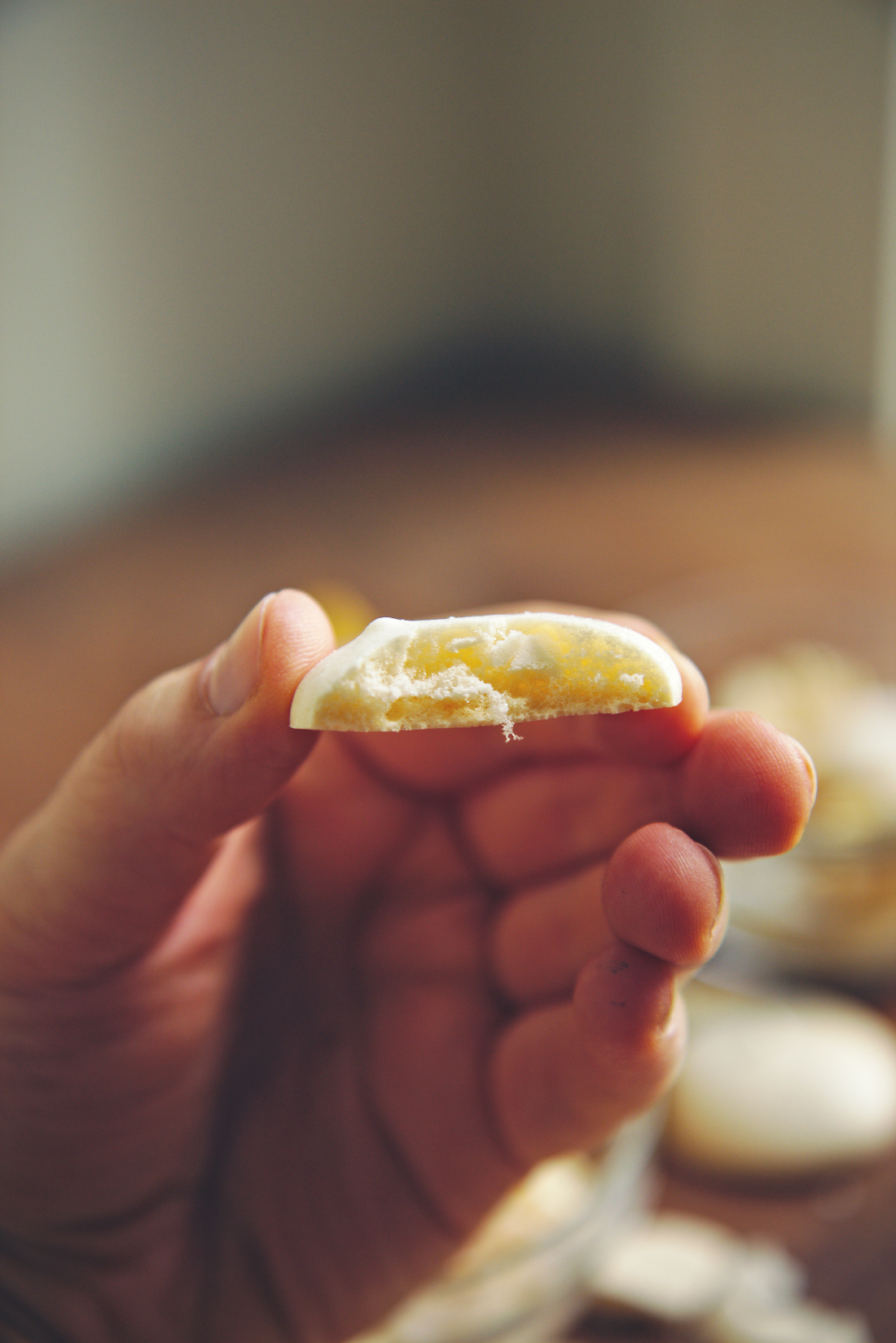
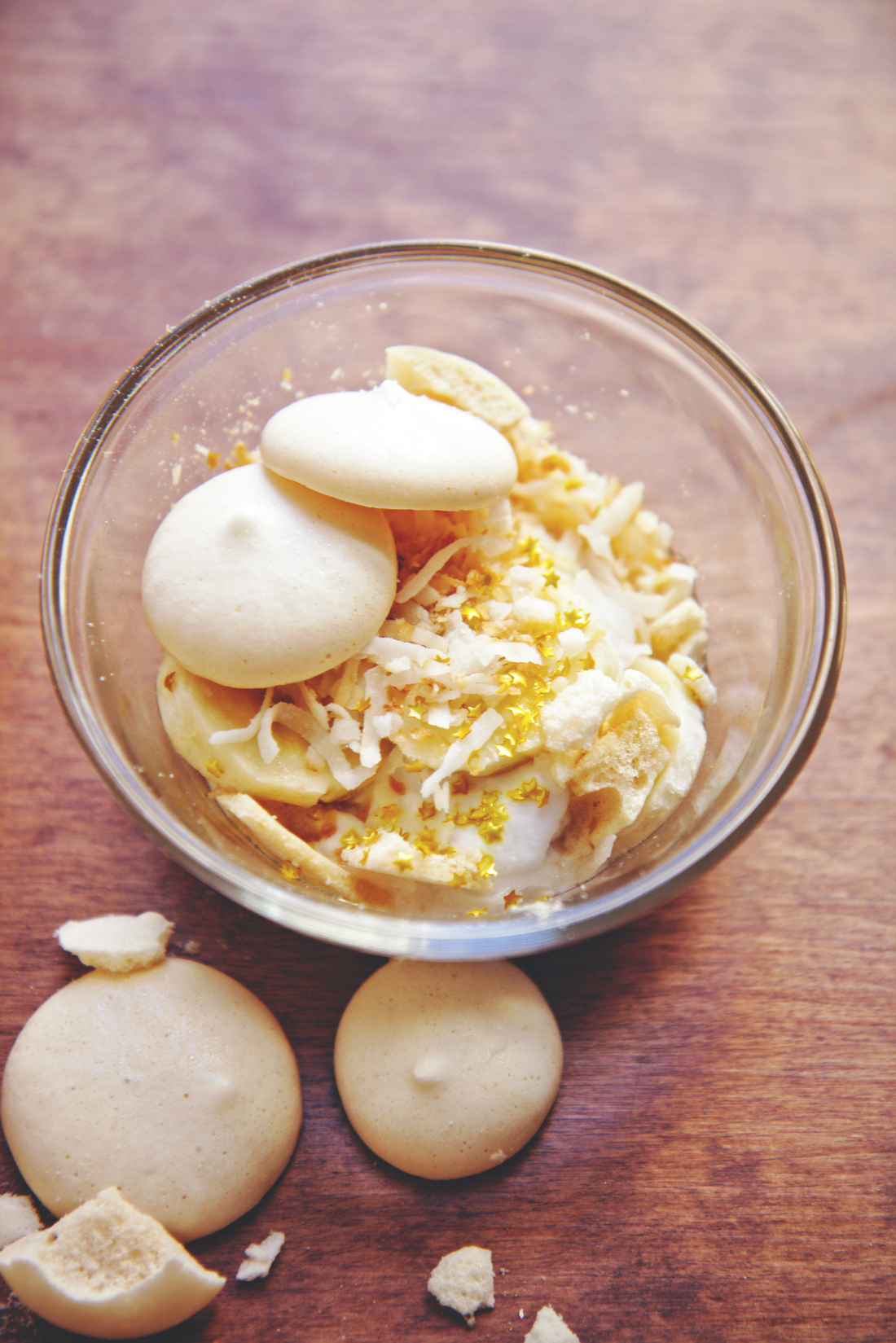
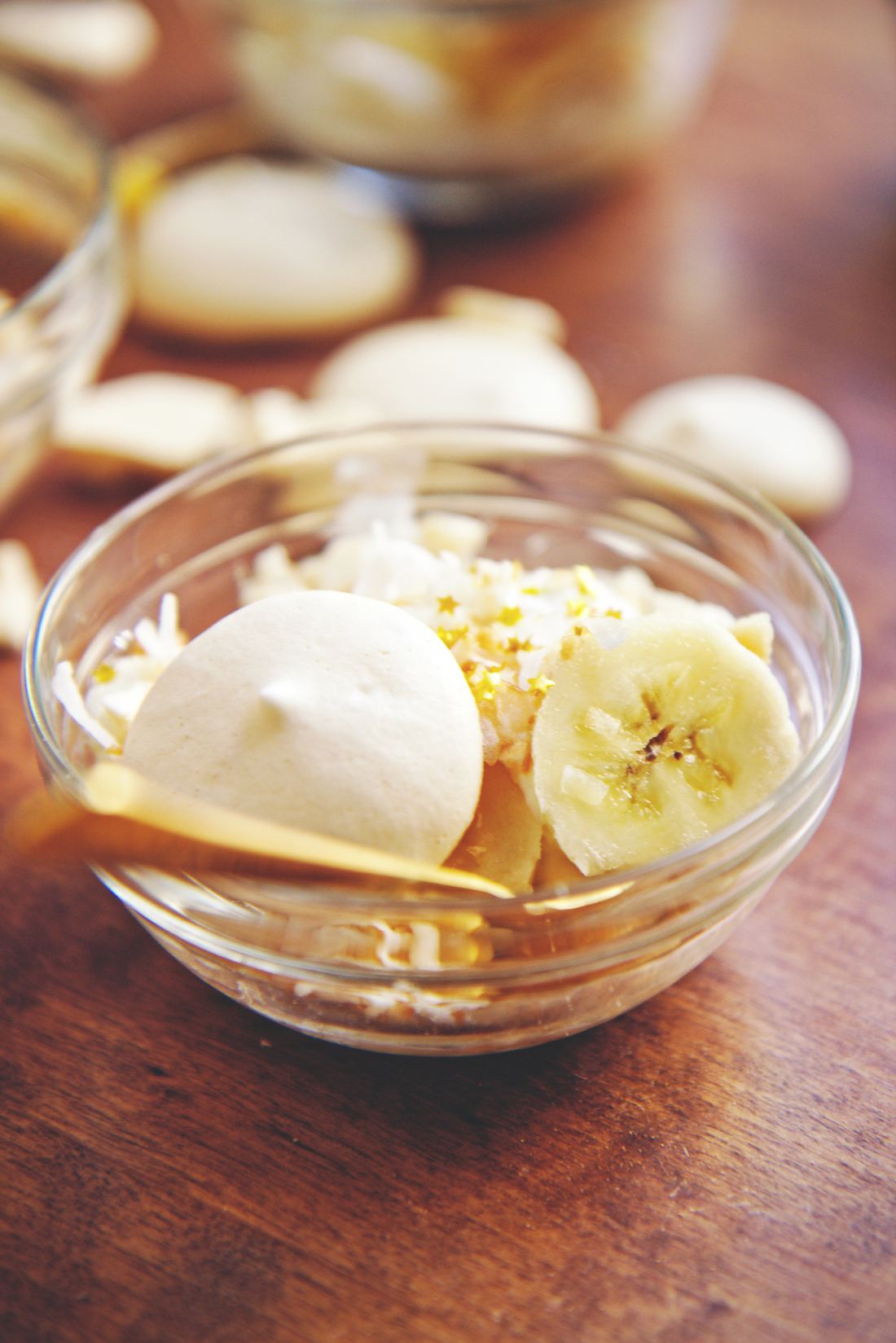
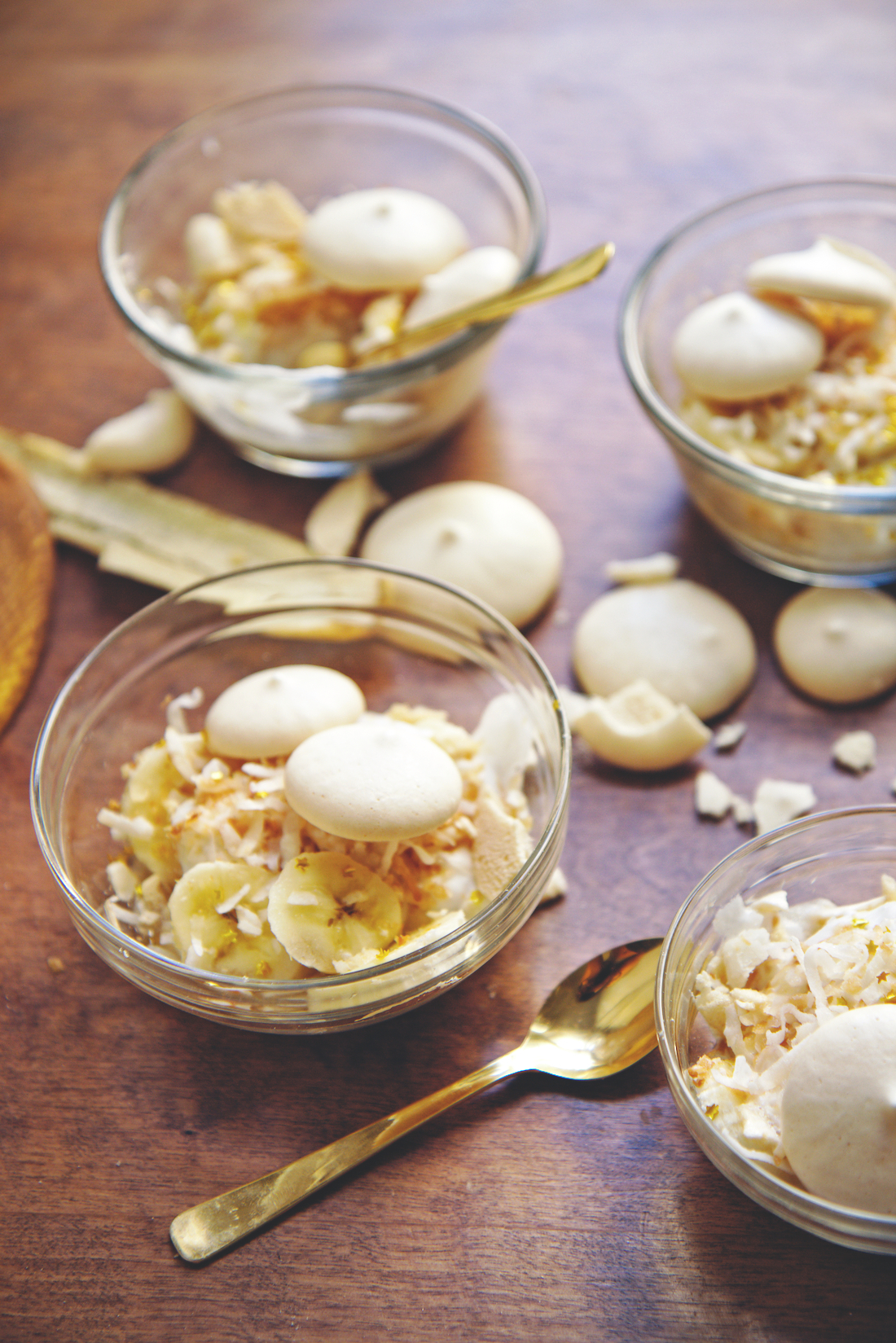
June 10, 2015 at 8:09 pm
this is awesome! I love getting dorky about food science and this is one of the coolest things I’ve heard in a long time. Thanks for sharing!
June 11, 2015 at 12:25 am
Thanks so much Nicola! I am also a self-described food nerd! xx